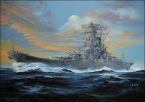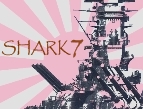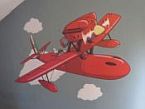Shark7
Posts: 7937
Joined: 7/24/2007
From: The Big Nowhere
Status: offline

|
The AI got me good with this one, and yes, all of my ships were sunk.
--------------------------------------------------------------------------------
Night Time Surface Combat, near Kuching at 58,88, Range 2,000 Yards
Japanese Ships
DD Hakaze, Shell hits 26, and is sunk
xAK Sinsei Maru, Shell hits 20, and is sunk
xAK Victoria Maru, Shell hits 33, heavy fires, heavy damage
xAP Argentina Maru, Shell hits 6, heavy fires, heavy damage
xAP Baikal Maru, Shell hits 2, Torpedo hits 2, and is sunk
Allied Ships
DD Van Nes
DD Jupiter
Japanese ground losses:
Vehicles lost 8 (6 destroyed, 2 disabled)
Reduced sighting due to 14% moonlight
Maximum visibility in Overcast Conditions and 14% moonlight: 2,000 yards
Range closes to 11,000 yards...
Range closes to 10,000 yards...
Range closes to 9,000 yards...
Range closes to 8,000 yards...
Range closes to 7,000 yards...
Range closes to 6,000 yards...
Range closes to 5,000 yards...
Range closes to 4,000 yards...
Range closes to 3,000 yards...
Range closes to 2,000 yards...
CONTACT: Japanese lookouts spot Allied task force at 2,000 yards
Japanese ships attempt to get underway
CONTACT: Allied lookouts spot Japanese task force at 2,000 yards
DD Hakaze engages DD Van Nes at 2,000 yards
DD Hakaze engages DD Van Nes at 2,000 yards
DD Van Nes engages xAK Victoria Maru at 2,000 yards
DD Hakaze engages DD Jupiter at 2,000 yards
DD Van Nes engages xAP Baikal Maru at 2,000 yards
DD Van Nes engages DD Hakaze at 2,000 yards
DD Van Nes engages xAK Sinsei Maru at 2,000 yards
DD Hakaze sunk by DD Van Nes at 2,000 yards
xAP Baikal Maru sunk by DD Jupiter at 2,000 yards
DD Jupiter engages xAK Sinsei Maru at 2,000 yards
DD Jupiter engages xAK Victoria Maru at 2,000 yards
DD Van Nes engages xAK Sinsei Maru at 2,000 yards
Range increases to 3,000 yards
DD Jupiter engages xAK Victoria Maru at 3,000 yards
Range increases to 4,000 yards
DD Van Nes engages xAK Sinsei Maru at 4,000 yards
DD Van Nes engages xAK Sinsei Maru at 4,000 yards
Range closes to 2,000 yards
DD Jupiter engages xAP Argentina Maru at 2,000 yards
DD Jupiter engages xAK Victoria Maru at 2,000 yards
DD Jupiter engages xAK Victoria Maru at 2,000 yards
Range increases to 3,000 yards
DD Jupiter engages xAP Argentina Maru at 3,000 yards
Japanese Task Force Manages to Escape
Task forces break off...
If nothing else, this does show that the Allies can have good battles too...notice my IJN escort didn't land a single hit in this battle. Now granted, there were no big guns in this one, so the fact that big guns don't seem to hit often still holds true.
_____________________________
Distant Worlds Fan
'When in doubt...attack!'
|
 Printable Version
Printable Version




















 New Messages
New Messages No New Messages
No New Messages Hot Topic w/ New Messages
Hot Topic w/ New Messages Hot Topic w/o New Messages
Hot Topic w/o New Messages Locked w/ New Messages
Locked w/ New Messages Locked w/o New Messages
Locked w/o New Messages Post New Thread
Post New Thread